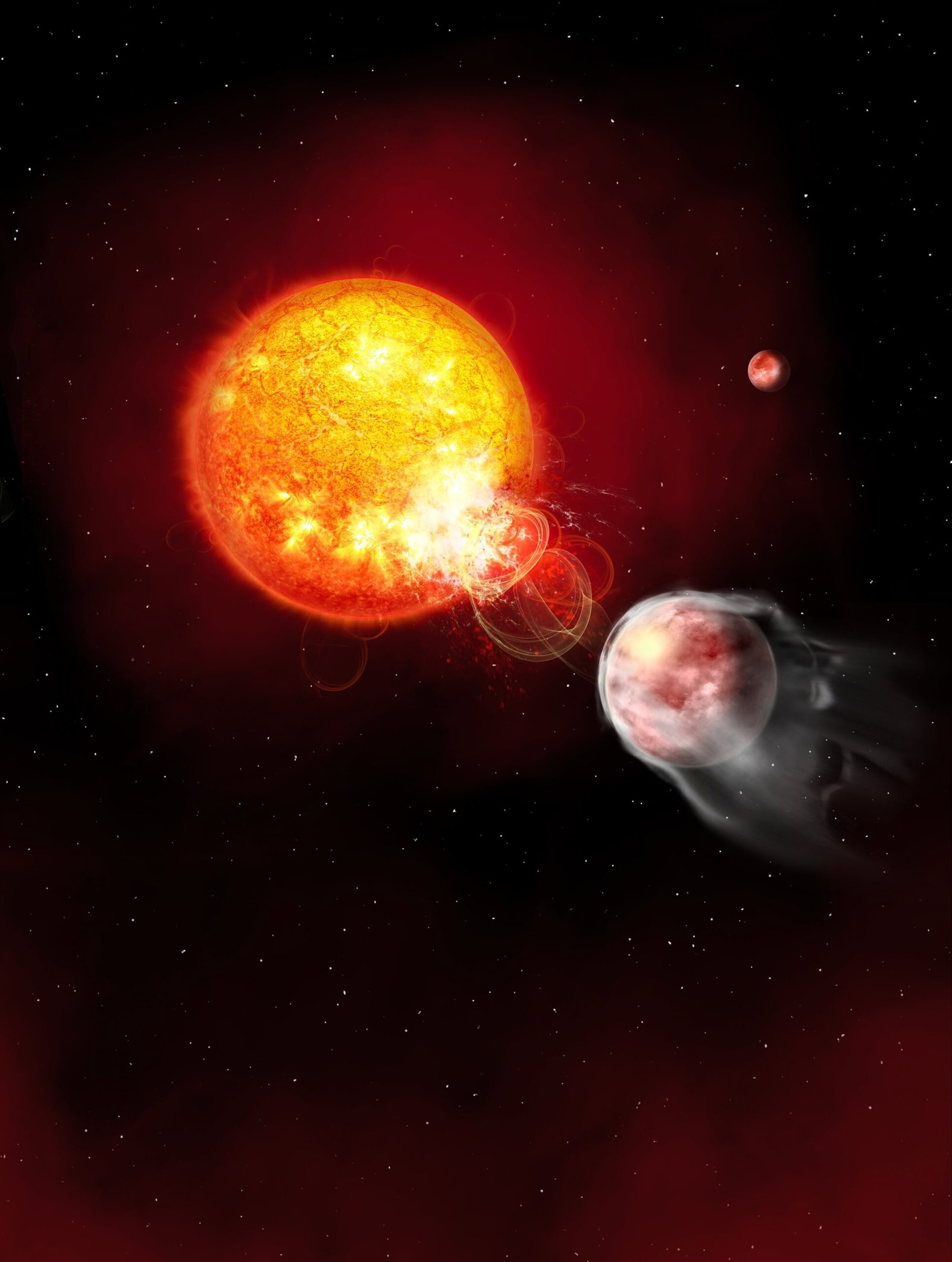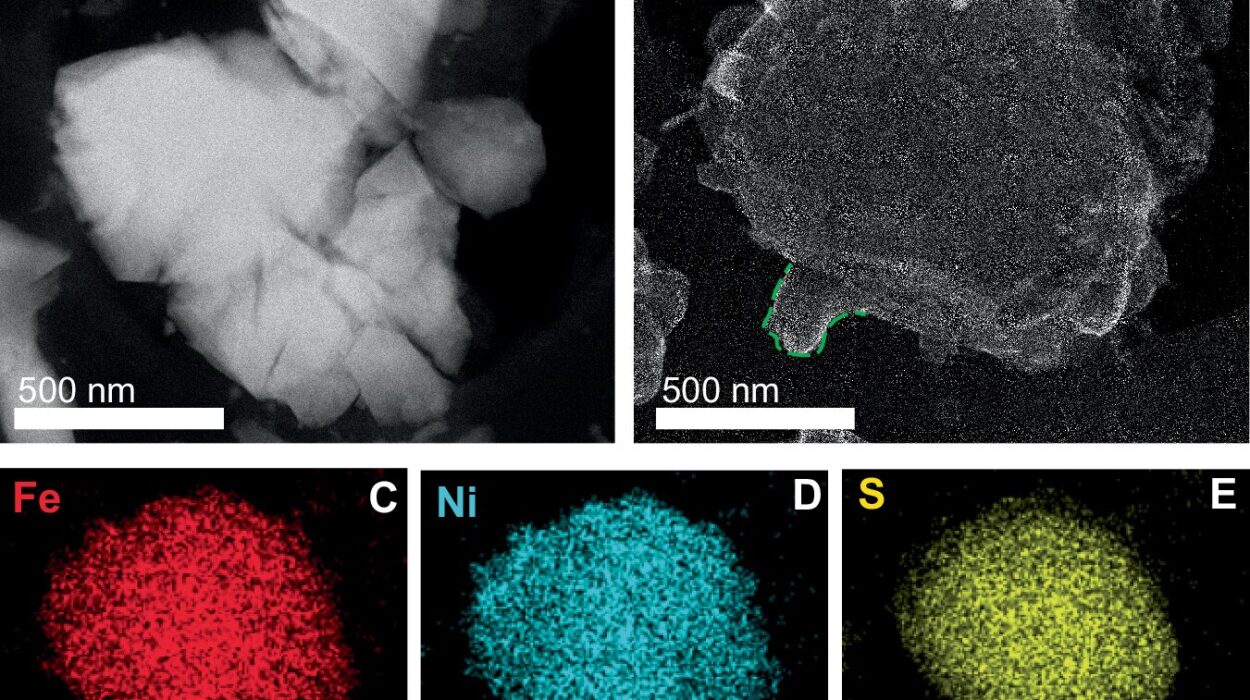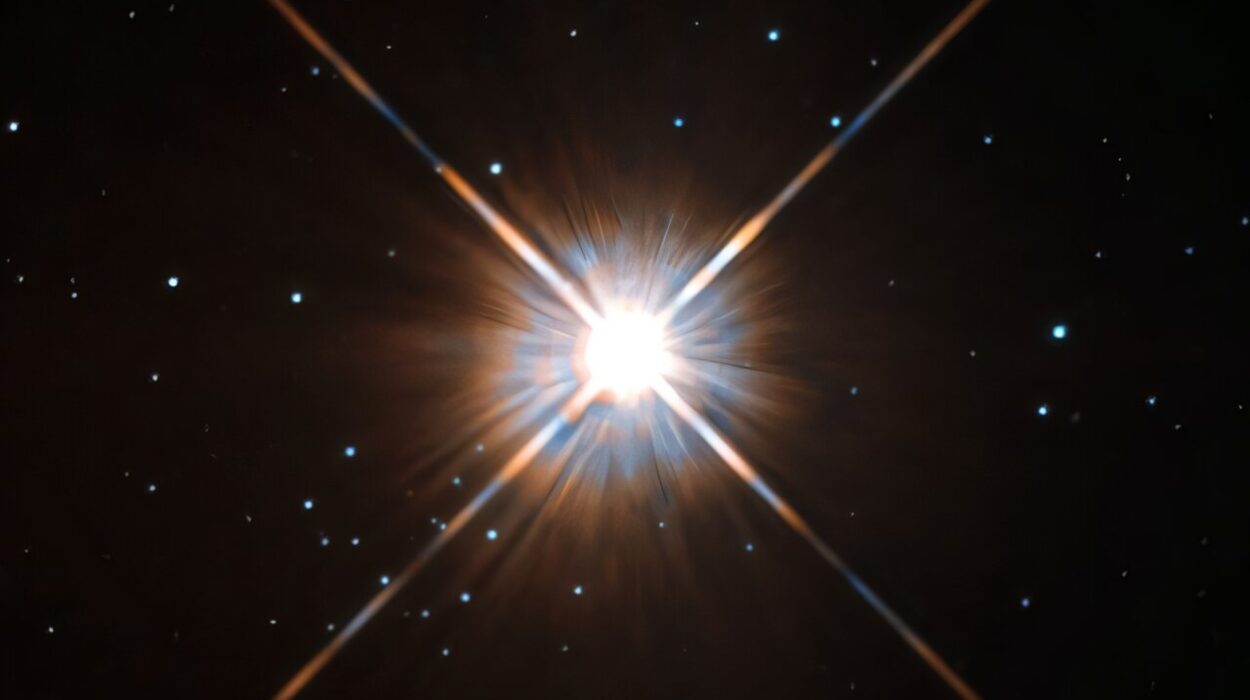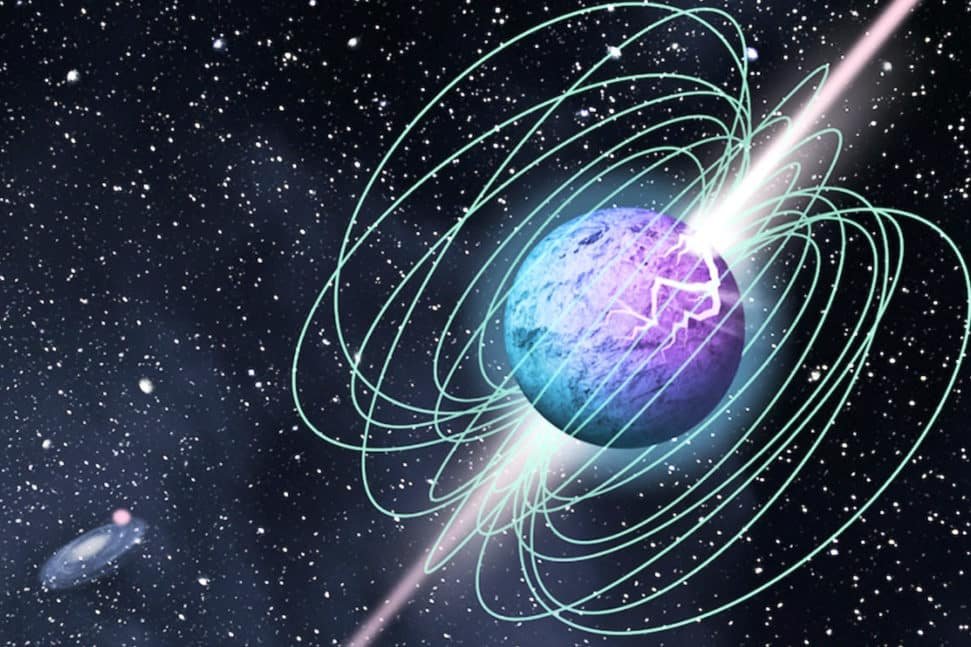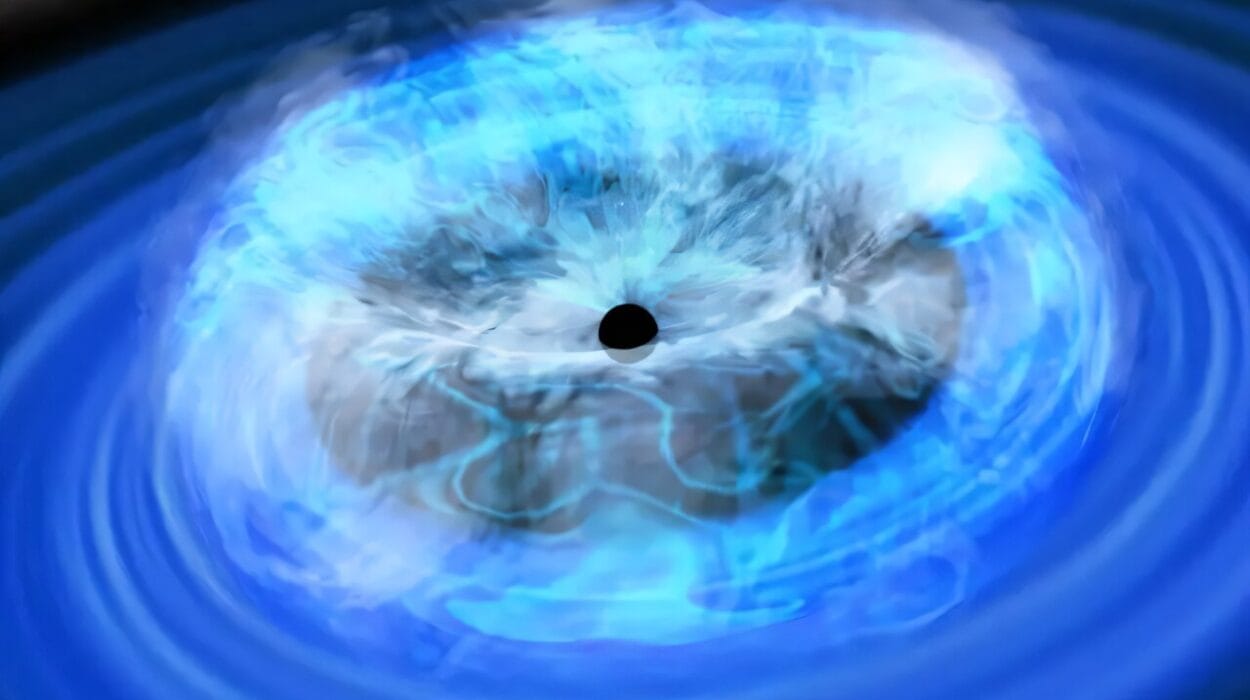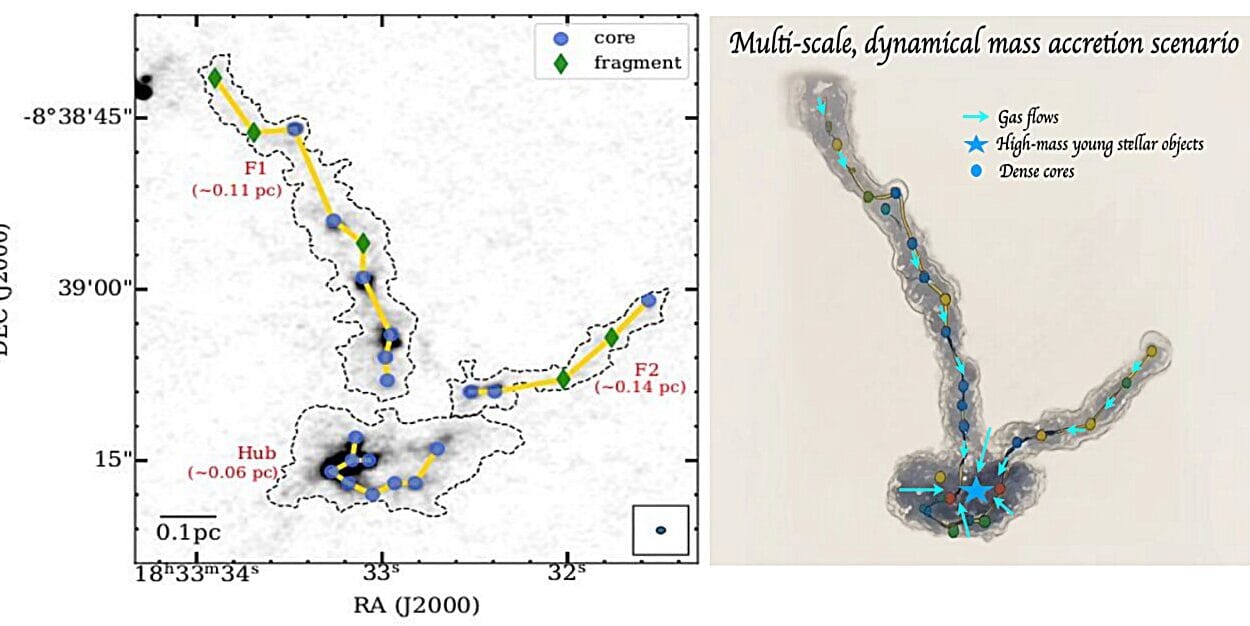In the vast black ocean of space, where stars burn quietly and planets drift in silent obedience, a cosmic tragedy is unfolding. A young planet, barely a teenager by stellar standards, seems to be digging its own grave—whipping its host star into violent flares and standing helplessly as radiation peels away its fragile atmosphere.
Thanks to the European Space Agency’s Cheops mission and data from NASA’s TESS and the James Webb Space Telescope, astronomers have captured something extraordinary: a planet not merely suffering under the wrath of its star, but actively provoking it. The discovery, published in the journal Nature, reveals the first direct evidence of a planet triggering stellar flares—fiery tantrums that, in turn, are destroying the very world that caused them.
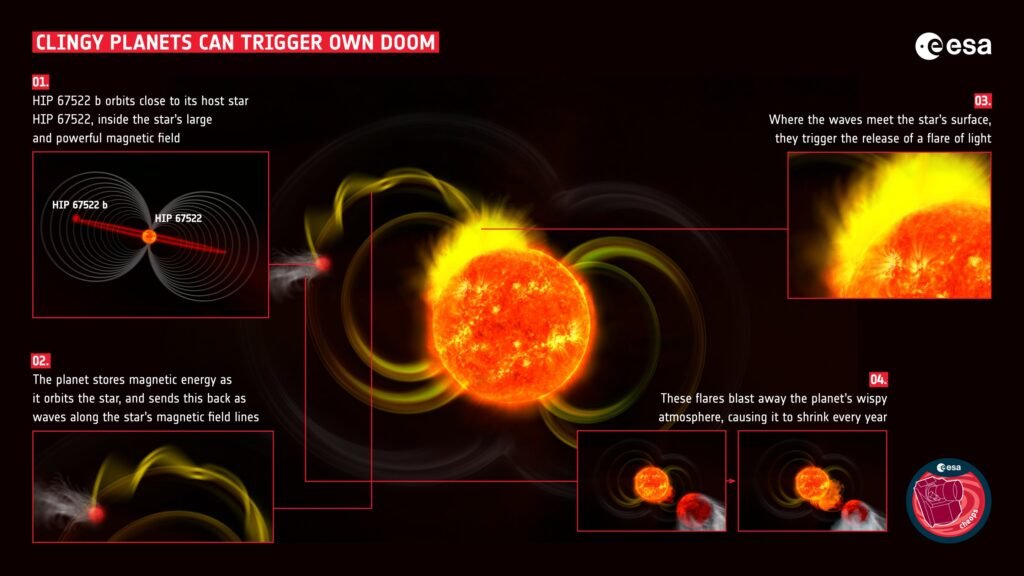
It’s an unprecedented glimpse into a cosmic relationship gone terribly wrong. Welcome to HIP 67522 b—the exoplanet with a death wish.
A Young Star with a Dangerous Glow
The star in question, HIP 67522, sits roughly 450 light-years away from Earth in the constellation Centaurus. It is slightly larger than our Sun but dramatically younger—just 17 million years old. For comparison, our Sun is a sedate 4.6 billion years into its middle age, while HIP 67522 is still in the volatile throes of stellar adolescence.
This youth makes the star wildly active. It spins faster, churns harder, and generates a tangled magnetic field far stronger than the calm solar field we know. Think of it as a furnace with its temperature dial still being adjusted—powerful, chaotic, and unpredictable.
Around this fiery young star orbits a planet: HIP 67522 b. It is massive—nearly the size of Jupiter—but puffy and low in density, as though inflated with helium or made from cotton candy. It circles its star once every seven days, nestled perilously close to the magnetic monster it calls home.
And that closeness, scientists believe, is exactly what’s tearing it apart.
Flares That Shouldn’t Exist
The idea that a planet could provoke its star into outbursts isn’t entirely new. Theoretical models dating back to the 1990s proposed that a planet nestled close enough to a magnetically active star could nudge that star into producing flares. But until now, this was pure speculation—an elegant thought experiment with no solid evidence.
That changed when Dr. Ekaterina Ilin and her team at the Netherlands Institute for Radio Astronomy (ASTRON) took a closer look at HIP 67522.
First, they spotted something unusual in the data from NASA’s Transiting Exoplanet Survey Satellite (TESS): periodic flares from HIP 67522’s surface that seemed to coincide with the orbit of its innermost planet. To dig deeper, they turned to ESA’s Cheops satellite, designed to observe exoplanets with razor-sharp precision.
And what Cheops found was astonishing.
In total, 15 powerful flares were detected from HIP 67522. Almost all of them erupted while the planet was transiting—passing directly in front of the star from Earth’s perspective. This alignment made one thing clear: the flares weren’t random. They were being triggered, and all signs pointed to the planet as the culprit.
But these weren’t ordinary stellar flares. They were more than 100 times stronger than what models had predicted. Like a match dropped into a powder keg, HIP 67522 b seemed to be setting off massive explosions that were waiting to happen—explosions that, terrifyingly, were aimed right back at the planet itself.
The Whip-Cracking Planet
So how can a planet—essentially a ball of gas and rock—provoke a star that’s thousands of times its size into an electromagnetic meltdown?
The answer lies in magnetic field lines, and a mechanism not unlike cracking a whip.
As the planet moves through the intense magnetic field of its host star, it gathers and redirects energy. This movement sends powerful waves down the magnetic “ropes” that stretch between the star and the planet. When the waves reach the star’s surface, they deliver a jolt—enough to trigger a flare.
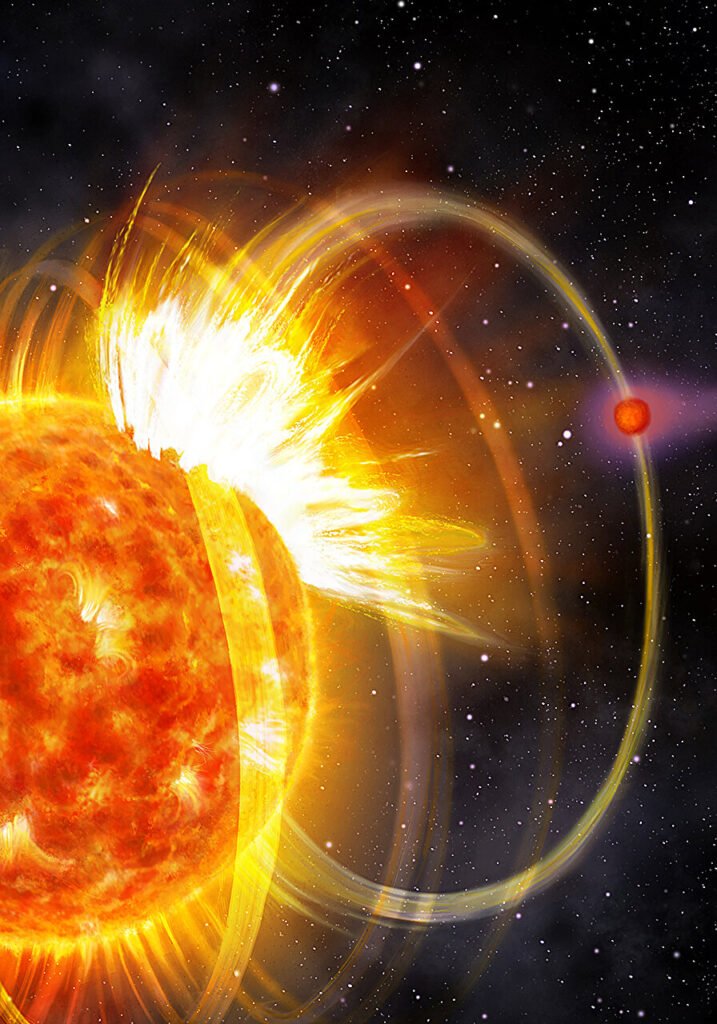
It’s as if HIP 67522 b is yanking at the threads of the star’s magnetic sweater, pulling just hard enough to make it unravel in bursts of radiation.
And because the planet is orbiting in such tight quarters, the flares it triggers blast directly toward it. This self-inflicted punishment is like lighting a fuse and standing too close to the fireworks.
The Slow Death of a Cotton Candy World
HIP 67522 b is not built for resilience. Despite being as large as Jupiter, it is ghostly in composition—so airy and insubstantial that scientists compare its density to candy floss.
And candy floss does not fare well in firestorms.
The repeated radiation flares, rich in high-energy particles and intense ultraviolet light, are steadily peeling away the planet’s upper atmosphere. Its gas is evaporating into space, lost in the vacuum between the stars. Over the next 100 million years—a blink in cosmic time—HIP 67522 b could shrink from a Jupiter-sized gas giant to something much closer to a scorched, atmosphere-stripped version of Neptune.
This is not just planetary erosion. It is cosmic suicide.
“The planet seems to be triggering particularly energetic flares,” said Dr. Ilin. “We think the waves it sends along the star’s magnetic field lines are setting off explosions that are already primed to happen.”
A First in Cosmic History
This discovery rewrites what we thought we knew about the relationship between stars and planets.
Until now, it was assumed that stars dictated the terms—emitting light, heat, and radiation that planets simply endured. The gravitational and magnetic hierarchies were clear: stars dominated; planets obeyed.
But HIP 67522 b breaks that rule.
For the first time, we have clear evidence of a planet affecting its star—not gravitationally, as Jupiter tugs on our Sun, but magnetically. It’s a startling twist in our understanding of stellar dynamics and planetary interaction.
“It’s the first time we’ve seen a planet influencing its host star like this,” said Dr. Ilin. “It turns the old idea of a one-way interaction completely on its head.”
A Universe Full of Untold Stories
When HIP 67522 b was first discovered, it was the youngest planet known to orbit its star in less than ten days. Since then, astronomers have found a handful of other potential systems that might behave similarly—but none as dramatic as this.
And now, with tools like TESS, Cheops, and the upcoming ESA Plato mission, researchers are eager to find more.
“I have a million questions,” said Dr. Ilin. “This is a completely new phenomenon, and the details are still unfolding.”
She hopes to explore these flares across multiple wavelengths—particularly in ultraviolet and X-ray—where the most biologically and atmospherically damaging radiation lies. Meanwhile, ESA’s Plato mission, designed to study sun-like stars with incredible precision, could soon reveal even subtler flares and interactions in systems like HIP 67522.
The research team also used the Australian Telescope Compact Array to observe HIP 67522 in the radio spectrum. They confirmed that it is a magnetically active star, bursting with low-frequency radio waves—but detected no specific flare signals that could be tied to the planet. That non-detection supports the theory that planet-induced flares are real, but subtle—requiring a delicate mix of timing, geometry, and magnetic instability.
A Self-Sabotaging Wonder
In the end, HIP 67522 b may be doomed—but it offers us a window into the delicate, violent, and often poetic balance of forces that shape the cosmos.
This is not just a story of radiation and orbital mechanics. It’s a reminder that in the universe, the relationships between things are often more complex than they appear. A planet can shape a star’s fate, just as stars shape the fate of worlds. It’s a dance of energy, proximity, and time.
What we are witnessing, thanks to missions like Cheops and the brilliance of scientists like Dr. Ilin and her team, is the drama of a planet too close to power, caught in an embrace that is equal parts beautiful and fatal.
HIP 67522 b is the universe telling a story—and we, for once, are here to listen.
Reference: Ekaterina Ilin, Close-in planet induces flares on its host star, Nature (2025). DOI: 10.1038/s41586-025-09236-z. www.nature.com/articles/s41586-025-09236-z
